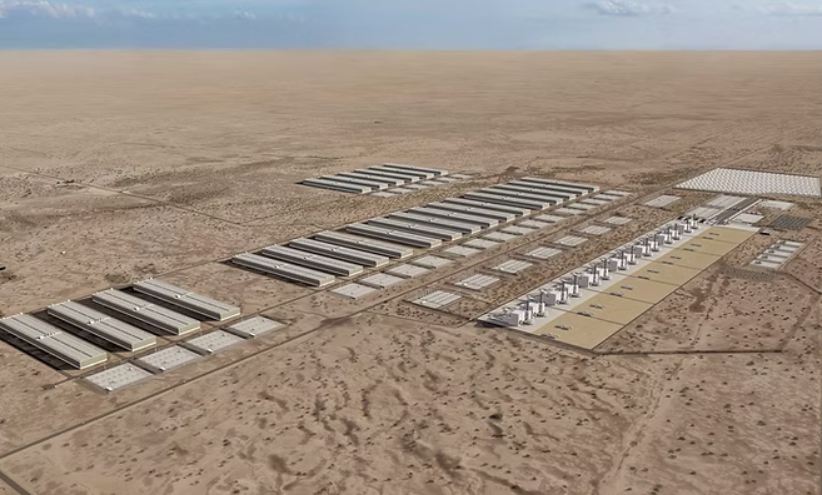Data centers already account for more than 2% of U.S. electricity consumption, and with artificial intelligence accelerating demand, the power gap is widening. Pacifico Energy’s proposed GW Ranch project in Pecos County, Texas aims to address that gap by going off-grid—bypassing utility interconnections and regulatory bottlenecks in favor of a purpose-built, self-contained system combining gas turbines and battery storage.
The project spans over 8,000 acres and targets 1 GW of capacity online by 2028 and 5 GW by 2030, according to the developer. Pacifico positions GW Ranch as a direct response to rising frustration among hyperscale operators over long wait times for grid connections. Utilities in major U.S. markets now report lead times one to two years longer than what data center developers typically plan for, a disconnect that is forcing the industry to explore alternative supply models.
Pacifico’s off-grid approach is not without precedent but represents a shift from backup power to primary supply. A recent Bloom Energy survey shows that 38% of data centers expect to incorporate onsite primary generation by 2030, up sharply from 13% in 2023. Even more striking, 27% of operators expect to be fully powered by onsite generation by 2030, compared to just 1% a year ago. GW Ranch fits squarely within this trend, aligning with the industry’s pivot toward self-reliance in power procurement.
Yet the choice of generation technologies underscores the balancing act between speed and sustainability. Pacifico plans to rely on gas turbines complemented by battery storage—a configuration that ensures reliability and dispatchability but raises regulatory and emissions questions. Bloom Energy notes that 46% of announced U.S. data center projects are located in non-attainment air quality zones, where combustion-based solutions face more stringent permitting requirements. Whether GW Ranch can navigate these constraints without delays remains a critical test case for similar large-scale off-grid builds.
Local economic considerations add another layer of complexity. Pecos County officials emphasize job creation and tax base growth, highlighting the project’s promise to diversify the regional economy without drawing on local infrastructure or water resources. This framing aligns with a broader pattern of rural counties positioning themselves as hosts for hyperscale development, often trading regulatory speed and land availability for guaranteed investment inflows.
Stay updated on the latest in energy! Follow us on LinkedIn, Facebook, and X for real-time news and insights. Don’t miss out on exclusive interviews and webinars—subscribe to our YouTube channel today! Join our community and be part of the conversation shaping the future of energy.
